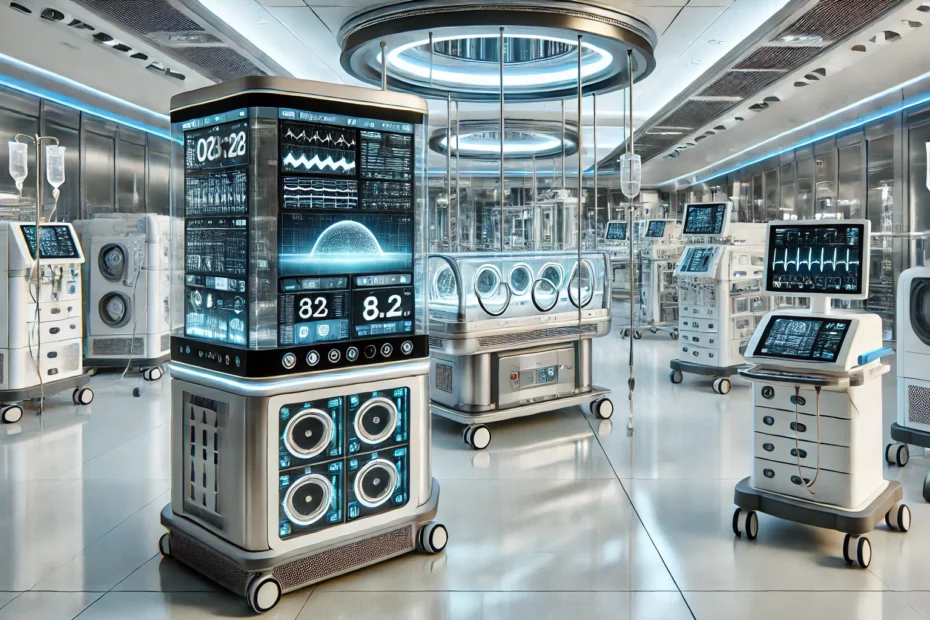Heating solutions play a crucial role in biomedical engineering. They are central to the operation of many medical devices, guaranteeing not only their efficiency, but also patient safety. In this article, find out why these solutions are essential, how they can be optimized and what choices you should consider for your biomedical projects.
The Essential Role of Heating in Biomedical Engineering
Overview of Heating Applications in Biomedical Devices
Heating solutions are ubiquitous in biomedical engineering. From the incubators used to keep newborns at the right temperature to the sterilization equipment that ensures perfect disinfection, heating is a necessity. Heated blankets, for example, are essential for maintaining patients’ body temperature during surgery, preventing hypothermia. Without precise heat control, these devices could not function properly, compromising medical outcomes.
The Importance of Temperature Control
Why is temperature control so critical? Because an inadequate temperature can have serious consequences. In an incubator, a temperature that is too high or too low could endanger the life of a fragile newborn. Similarly, sterilization equipment that doesn’t maintain a constant temperature could allow pathogens to survive, jeopardizing patient safety. So it’s vital that every biomedical device has the right heating solutions, capable of maintaining a precise, stable temperature.
Exploring Different Types of Heating Solutions for Biomedical Applications
Electric heating elements
Electric heating elements are among the most common heating solutions used in medical devices. Why is that? Because they are efficient, precise and easy to integrate into a variety of applications. These elements are often used in syringe heaters, incubators or hyperthermia treatment devices. They provide rapid, even heating, which is essential for reliable care.
Infrared heating
Infrared heating offers another approach. It is particularly useful in non-invasive treatments and diagnostics. For example, it is used in certain physiotherapy devices to relieve pain through heat, or in sensors used to detect thermal variations in the human body. Infrared heating has the advantage of penetrating tissue without direct contact, making it hygienic and effective.
Fluid Heating Systems
Fluid heating systems are widely used in medical devices where precise, uniform heating is required, such as dialysis machines or heating blankets. These heating solutions offer homogeneous heat distribution, which is crucial for maintaining optimal conditions in medical devices. For example, fluid heating blankets are used to prevent hypothermia in operating room patients.
Innovations and Future Trends in Heating Technologies
Intelligent Heating Systems
The future of heating solutions in biomedical engineering lies in intelligent systems. Thanks to the integration of the Internet of Things (IoT), these systems enable real-time control and automatic temperature adjustment. Imagine an incubator that can instantly adjust its temperature according to the specific needs of each patient, or a sterilization device that adapts its heating cycle according to the type of material to be disinfected. These innovations offer unprecedented precision and efficiency.
Energy Saving Solutions
With growing awareness of environmental impact, energy-saving heating solutions are becoming a priority. These systems are designed to minimize energy consumption while maintaining optimum performance. How do they do this? By using advanced materials and cutting-edge technologies that reduce heat loss. These solutions not only reduce operating costs, but also the carbon footprint of medical facilities.
Future trends
What are the trends to watch? Magnetic induction heating technologies and nanotechnologies are revolutionizing the field. They enable ultra-precise heating on a microscopic scale, paving the way for new applications in medical treatment and biomedical research. These advances promise to deliver even more effective heating solutions, tailored to the specific needs of each patient.
Choosing the Right Heating Solution for Your Biomedical Project
Factors to consider
What type of heating solution should you choose for your project? It’s essential to consider several factors, such as the specific needs of the application, budget constraints, and regulatory requirements. For example, a device intended for use in the operating room will require very precise, sterile heating solutions, while a device intended for home care may favor simpler, energy-saving solutions.
Case Studies
Take, for example, the successful implementation of a heating system in a dialysis machine. Thanks to a perfectly calibrated fluid heating solution, patients can benefit from a constant temperature of the water used, improving not only their comfort, but also the efficiency of the treatment. Such heating solutions demonstrate how choosing the right technology can make a significant difference to the care provided.
Conclusion
Heating solutions are an integral part of successful biomedical engineering. They guarantee not only the functionality of medical devices, but also patient safety. Whether through intelligent systems, energy-saving solutions, or future innovations, it is essential to choose solutions tailored to the specific needs of each biomedical application. By integrating the right technologies, you ensure not only the performance of your equipment, but also the well-being of your patients.
This article has explored the reasons, types and innovations of heating solutions for biomedical engineering, giving you an overview to guide your future choices.

